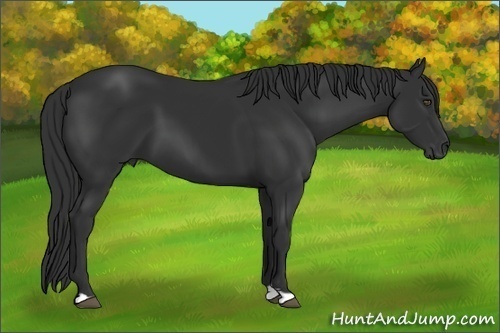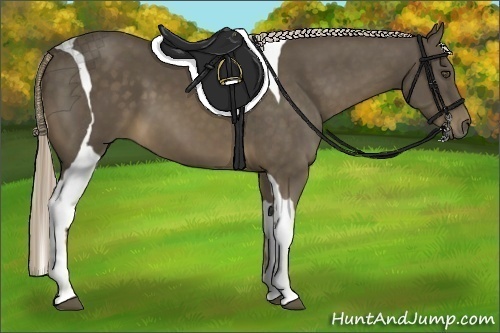X
HGG Community Forums
Log In to HorseGeneticsGame
HGG Community Forums
Join our discord server!
Howdy, Stranger!
It looks like you're new here. If you want to get involved, click one of these buttons!
Categories
- All Discussions61,359
- Announcements1,188
- HAJ Discussion59,016
- ↳ New Member Introductions68
- ↳ Help Me Out5,084
- ↳ Horses for Sale and Auction14,457
- ↳ Breeding Ads and Sales6,077
- ↳ Herd Helpers22,965
- ↳ Bug Discussion5
- Non HAJ Discussion1,155
- ↳ Saddle Sisterhood113
- ↳ Games, Contests and GiveAWays348
- ↳ Genetics305
In this Discussion
- BigBosAcres December 2016
- CrimsonHill December 2016
- SandyCreekAcres December 2016
Who's Online (4)
- annismyrph 6:26AM
- Fiddler 6:26AM
- GoldenHeartAcres 6:25AM
- Haystack 6:26AM
Chocolate palomino?
-
Okay, so I'm still trying to wrap my head around all this genetics business (it's super interesting, but I still feel so lost).
Anyway, I was wondering if anyone could give me hints as to how chocolate palomino happens? It's seems hard enough for me to find chocolate palominos to research, so any help would be great!
Thanks in advance.-- Katie -- -
Chocolate palomino would be Chestnut (ee) one cream (CCcr) Two Sooty (SstySsty) and at least one copy of DP (Dense Pheomelanin, I think I spelled that right) which does not show up on the testing layout but is responsible for the chocolate and liver in the color name
These are my Chocolates in case you would like to see. They have all been color tested.
http://www.huntandjump.com/adv_search.php?status=any&ageg=&agel=&agee=&erag=&eral=&erae=&heightg=&heightl=&heighte=&boneg=&bonel=&bonee=&f_basic=none&f_adv=none&f_limit=25&stallion=1&mare=1&gelding=1&spayedmare=1&bty=1&lined=lined&foundation=1&name=&name_lm=like&color=chocolate&color_lm=like&owner=176160&owner_lm=like&breeder=&breeder_lm=like&sire=&sire_lm=like&dam=&dam_lm=like&barn=&barn_lm=like&pasture=&past_lm=like&tattoo=&tat_lm=like&tat_and=and&club=&bc_lm=like&bc_and=and&e1=&e2=&a1=&a4=&a2=&a3=&f1=&f2=&p1=&p2=&s1=&s2=&s3=&c1=&c2=&c3=&d1=&d2=&g1=&g2=&ch1=&ch2=&z1=&z2=&sa2=&sa1=&kit1=&kit2=&kit3=&kit4=&kit5=&kit6=&kit10=&kit11=&kit12=&kit7=&kit8=&kit9=&sp1=&sp2=&sp3=&pax31=&pax32=&rb1=&rb2=&o1=&o2=&l1=&l2=&ice1=&icei=&ice2=&ice3=&ice4=&ice5=&ice6=&ice7=&ice8=&ice9=&ice10=&ice11=&ice12=&ice13=&brindle1=1&brindle2=1&wf1=1&wf2=1&wf3=1&wf4=1&wf5=1&wf6=1Post edited by BigBosAcres at 2016-12-25 19:52:04 -
Dense Pheomelanin is a gene that causes red pigment to build up in hair cells, making them darker than normal. It also causes liver chestnuts. Any horse may carry it, and it will help to darken any red based coat, even ones that also carry other dilution genes like Dun and Champagne. However, only Liver Chestnuts and Chocolate Palominos have special names.
There are two genes that darken coats--Sooty (Ssty) and Dense Pheomelanin (DP). Every horse has two copies or alleles of a gene, one from its sire, the other from its dam. In order to be Liver of Chocolate, a horse must have three darkening alleles. So SstySsty DPdp would be liver/chocolate. So would SstyS DPDP.
Post edited by SandyCreekAcres at 2016-12-26 04:42:26
-
One thing I didn't mention is that if a horse that would be chestnut or palomino gets all four darkening alleles--SstySsty DPDP, the chestnuts will still test as Liver Chestnuts but will appear black and people will sometimes refer to them as Black Chestnuts, and the Chocolate Palominos will be even darker than usual.

http://www.huntandjump.com/horse.php?horseid=3168325
http://www.huntandjump.com/horse.php?horseid=2898976Post edited by SandyCreekAcres at 2016-12-26 05:51:43
-
Well it looks like I'm going to have to try a few experiments once the new breeding year starts!-- Katie --
















